© 2025 MJH Life Sciences™ , Patient Care Online – Primary Care News and Clinical Resources. All rights reserved.
Top 10 Reasons Why Patients Come to Primary Care
What brings patients to your office-and not the specialty office down the street? Insights in this slideshow.

Why do patients visit primary care offices? The slides that follow offer a closer look at the primary problems that bring patients to your office.
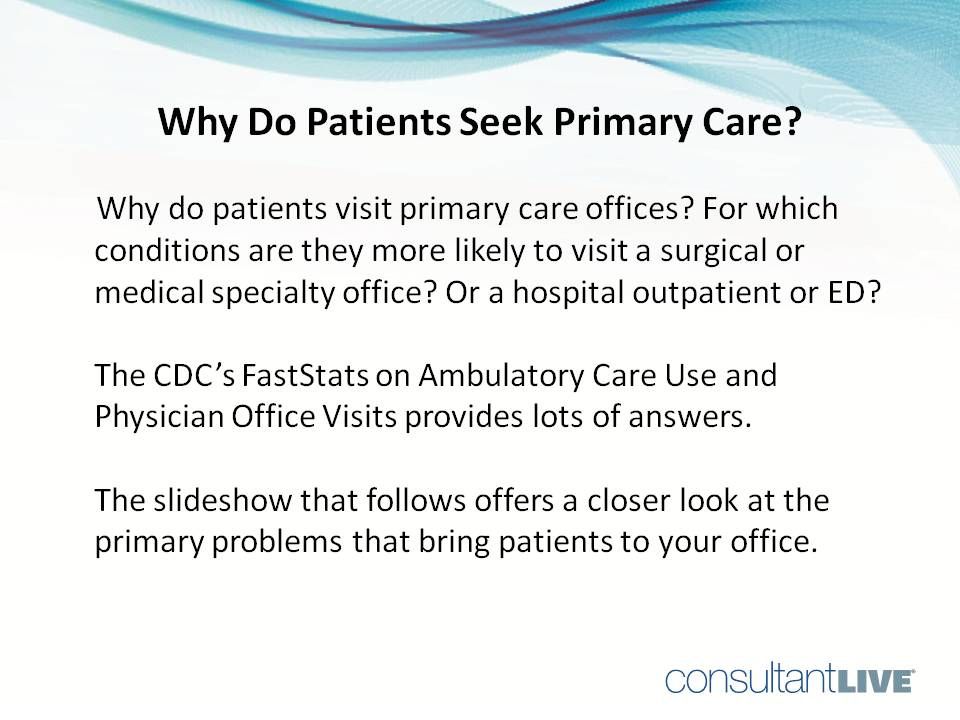
The CDC’s FastStats on Ambulatory Care Use and Physician Office Visits provides lots of answers in “Selected patient and provider characteristics for ambulatory care visits to physician offices and hospital outpatient and emergency departments: United States, 2009-2010.”
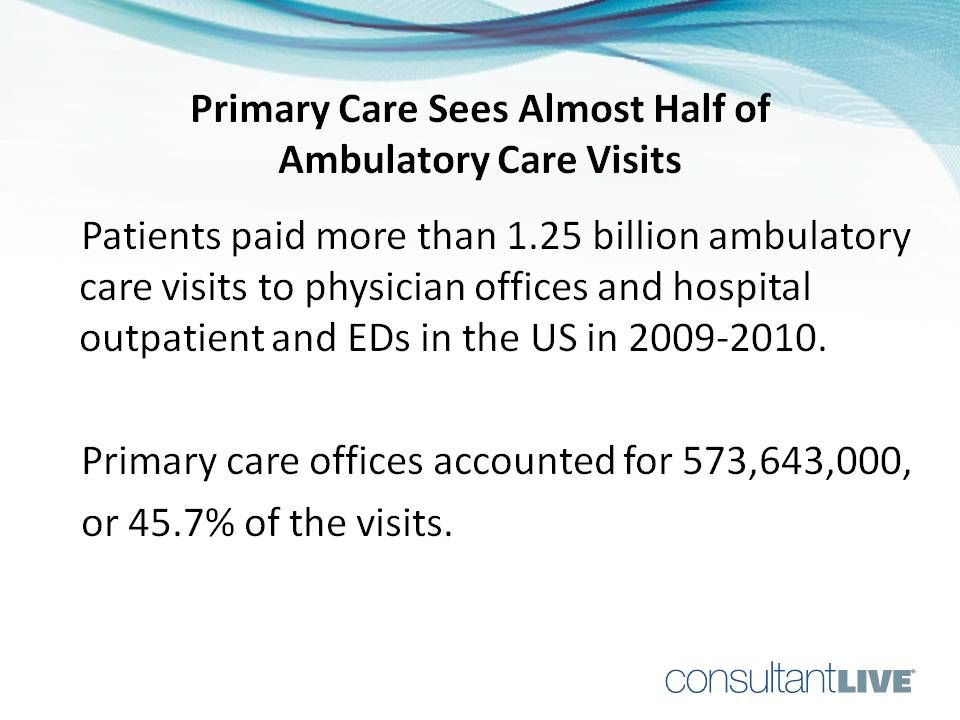
Patients paid more than 1.25 billion ambulatory care visits to physician offices and hospital outpatient and emergency departments in the United States in 2009-2010. Primary care offices accounted for 573,643,000, or 45.7% of the visits-close to half.
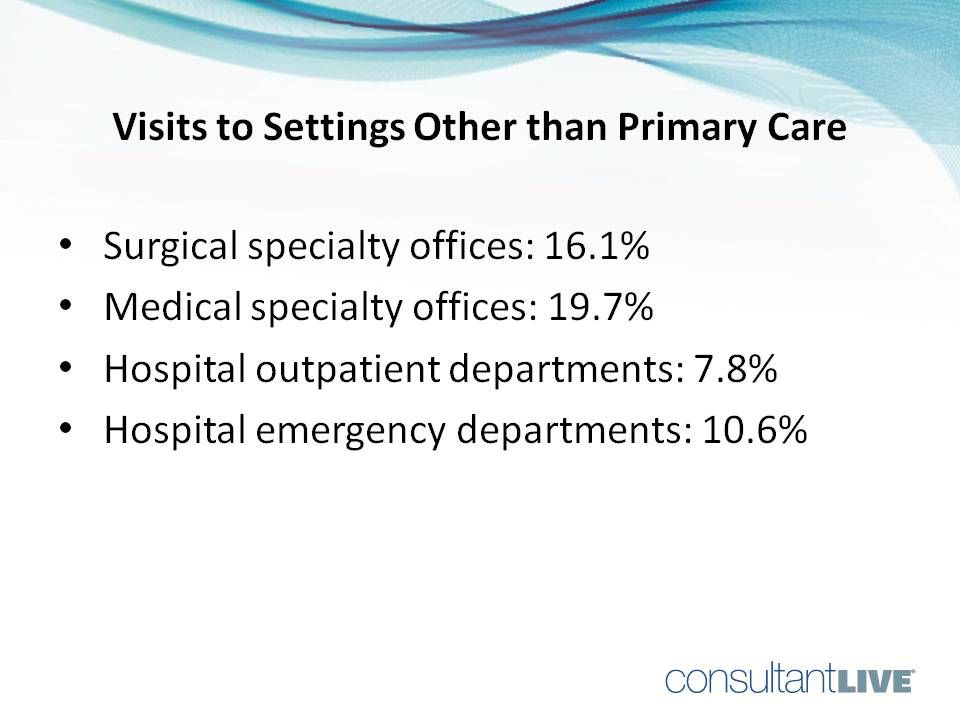
Visits to settings outside of primary care include: surgical specialty offices: 16.1%; medical specialty offices: 19.7%; hospital outpatient departments: 7.8%; hospital emergency departments: 10.6%.
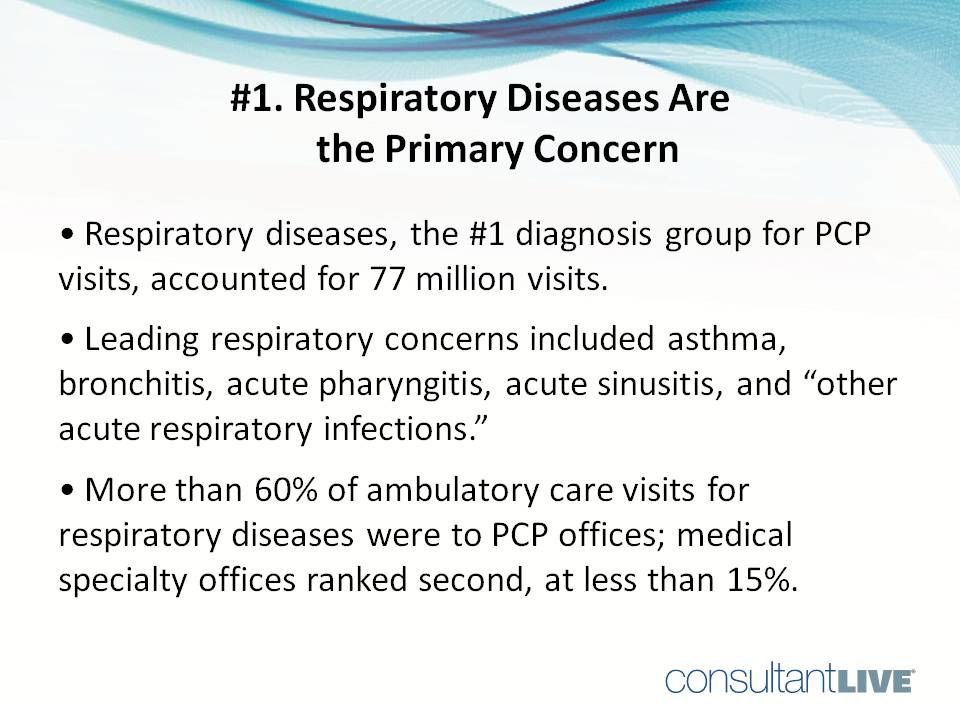
Respiratory diseases, the #1 diagnosis group for PCP visits, accounted for 77 million visits. Leading respiratory concerns included asthma, bronchitis, acute pharyngitis, acute sinusitis, and “other acute respiratory infections.” More than 60% of ambulatory care visits for respiratory diseases were to PCP offices; medical specialty offices ranked second, at less than 15%.
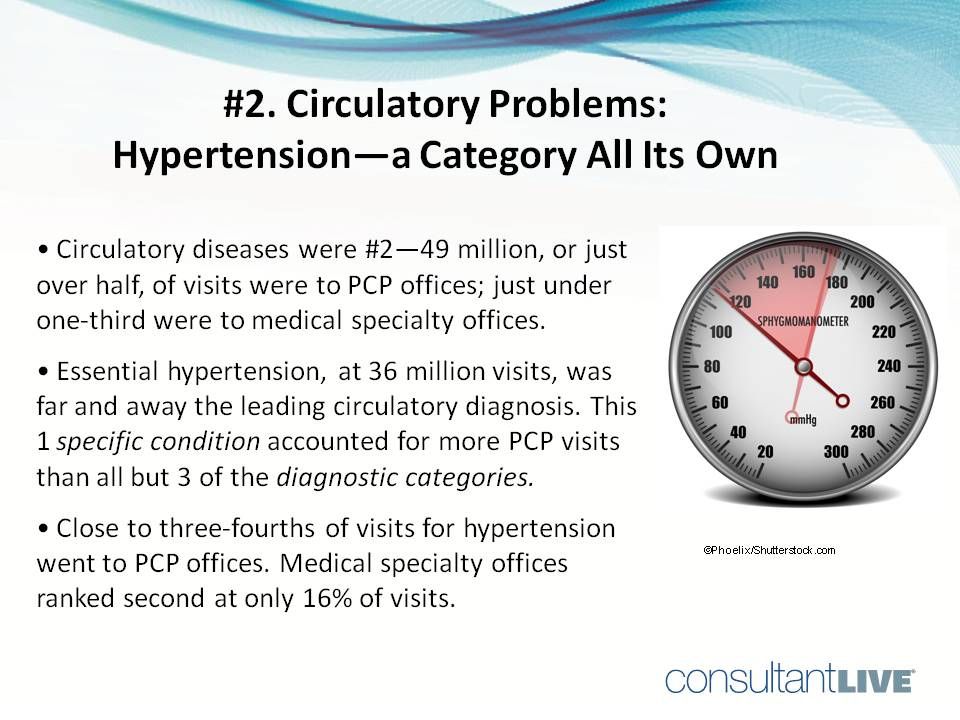
Circulatory diseases were #2-49 million, or just over half, of visits were to PCP offices; just under one-third were to medical specialty offices. Essential hypertension, at 36 million visits, was far and away the leading circulatory diagnosis. This 1 specific condition accounted for more PCP visits than all but 3 of the diagnostic categories. Close to three-fourths of visits for hypertension went to PCP offices. Medical specialty offices ranked second at only 16% of visits.
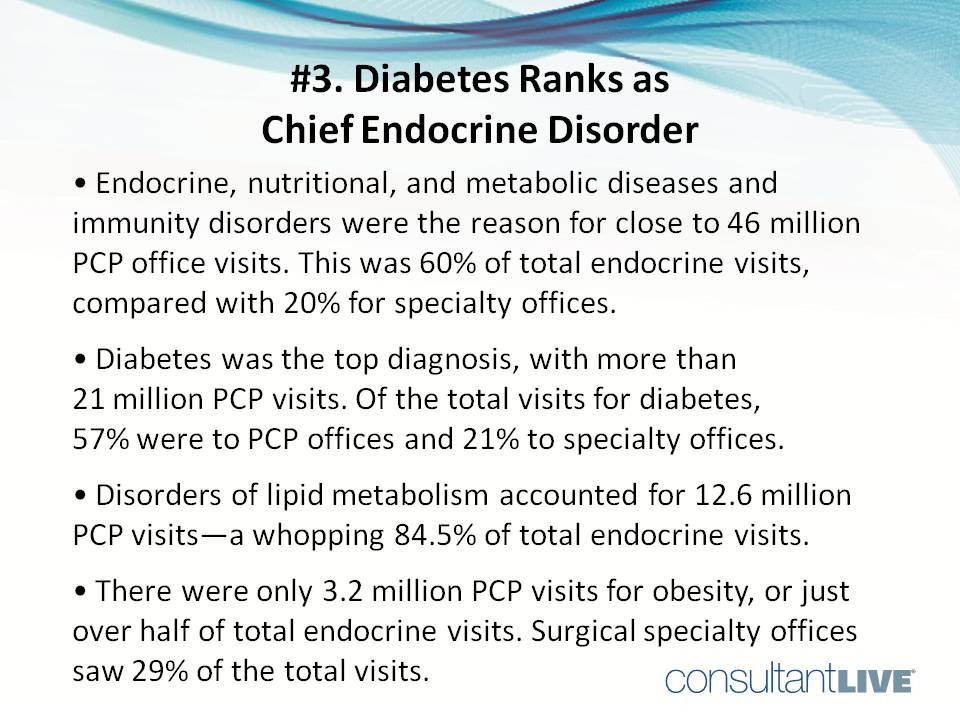
Endocrine, nutritional, and metabolic diseases and immunity disorders were the reason for close to 46 million PCP office visits-60% of total endocrine visits, vs 20% for specialty offices. Diabetes was the top diagnosis, with more than 21 million PCP visits. Of the total visits for diabetes, 57% were to PCP offices and 21% to specialty offices. Disorders of lipid metabolism accounted for 12.6 million PCP visits-a whopping 84.5% of total endocrine visits. There were only 3.2 million PCP visits for obesity, or just over half of total endocrine visits. Surgical specialty offices saw 29% of the total visits.
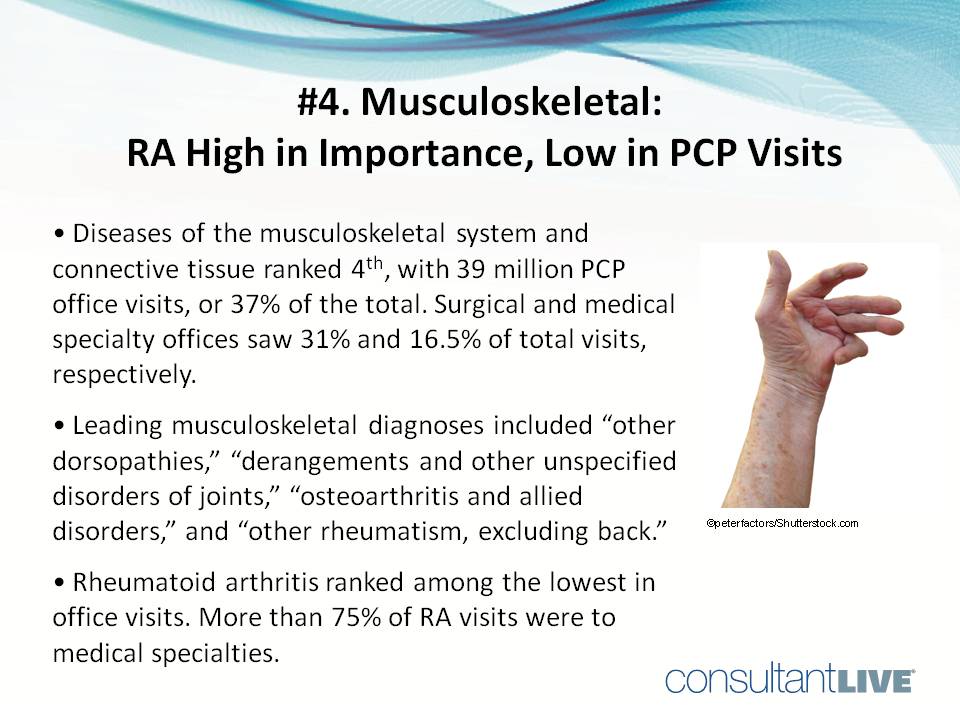
Diseases of the musculoskeletal system/connective tissue ranked 4th, with 39 million PCP office visits, or 37% of the total. Surgical and medical specialty offices saw 31% and 16.5% of total visits, respectively. Leading musculoskeletal diagnoses: “other dorsopathies,” “derangements and other unspecified disorders of joints,” “osteoarthritis and allied disorders,” “other rheumatism, excluding back.” Rheumatoid arthritis, arguably the most significant musculoskeletal disorder, ranked among the lowest in office visits. More than 75% of RA visits were to medical specialties.
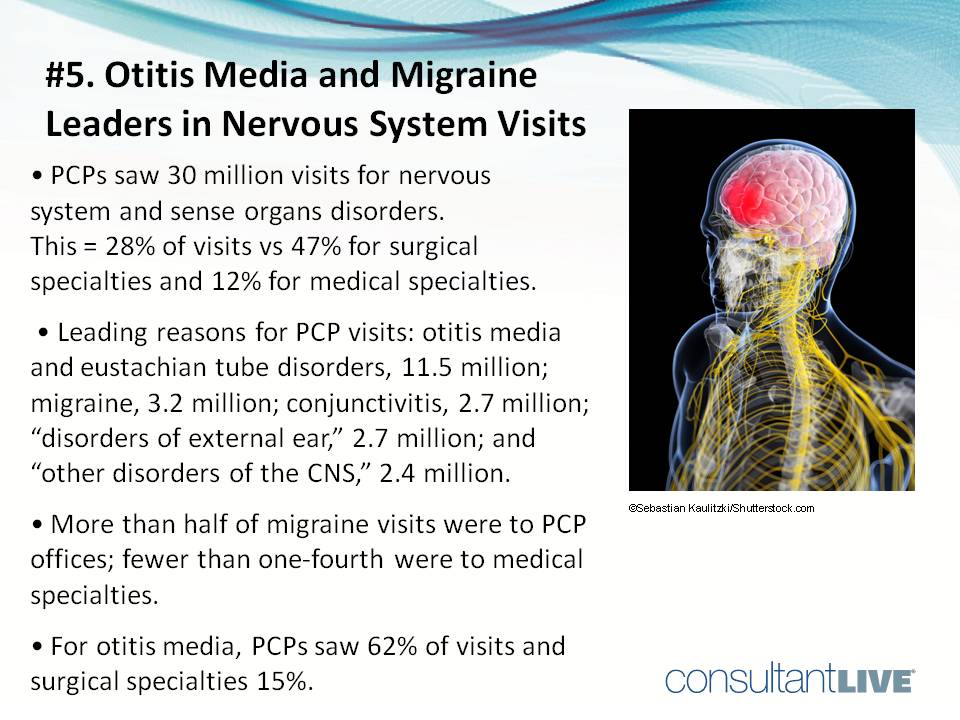
PCPs saw 30 million visits for nervous system/sense organs disorders, representing 28% of visits, vs 47% for surgical specialties, and 12% for medical specialties. Leading reasons for PCP visits: otitis media and eustachian tube disorders, 11.5 million; migraine, 3.2 million; conjunctivitis, 2.7 million; “disorders of external ear,” 2.7 million; and “other disorders of the CNS,” 2.4 million. More than half of migraine visits were to PCP offices; fewer than one-fourth were to medical specialties. For otitis media, PCPs saw 62% of visits and surgical specialties 15%.

More than 29 million visits for genitourinary diseases, or just under half, were to PCP offices; 22% were to surgical specialties. “Urinary tract infection,” “disorders of menstruation and abnormal bleeding,” “other disorders of female genital tract,” and “menopausal and postmenopausal disorders” were the top reasons for PCP visits. Percents of visits to PCPs for “menopausal and postmenopausal disorders” and “disorders of menstruation and abnormal bleeding” were 94% and 87%, respectively.
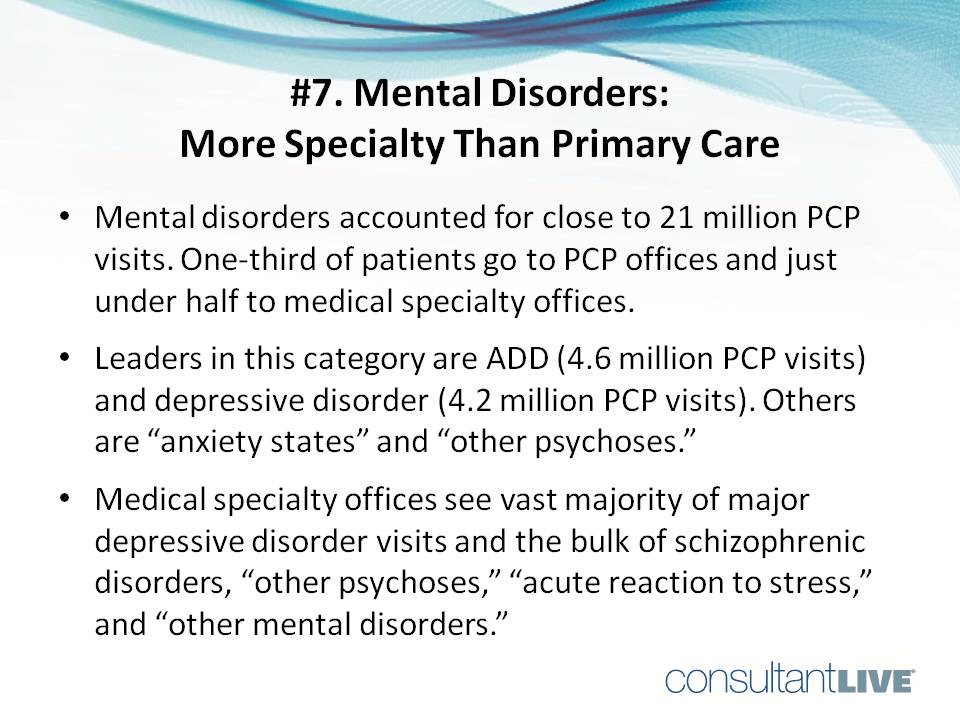
Mental disorders accounted for close to 21 million PCP visits. One-third of patients go to PCP offices and just under half to medical specialty offices. Leaders in this category are attention deficit disorder (4.6 million PCP visits) and depressive disorder (4.2 million PCP visits). Others are “anxiety states” and “other psychoses.” Medical specialty offices see vast majority of major depressive disorder visits and the bulk of schizophrenic disorders, “other psychoses,” “acute reaction to stress,” and “other mental disorders.”
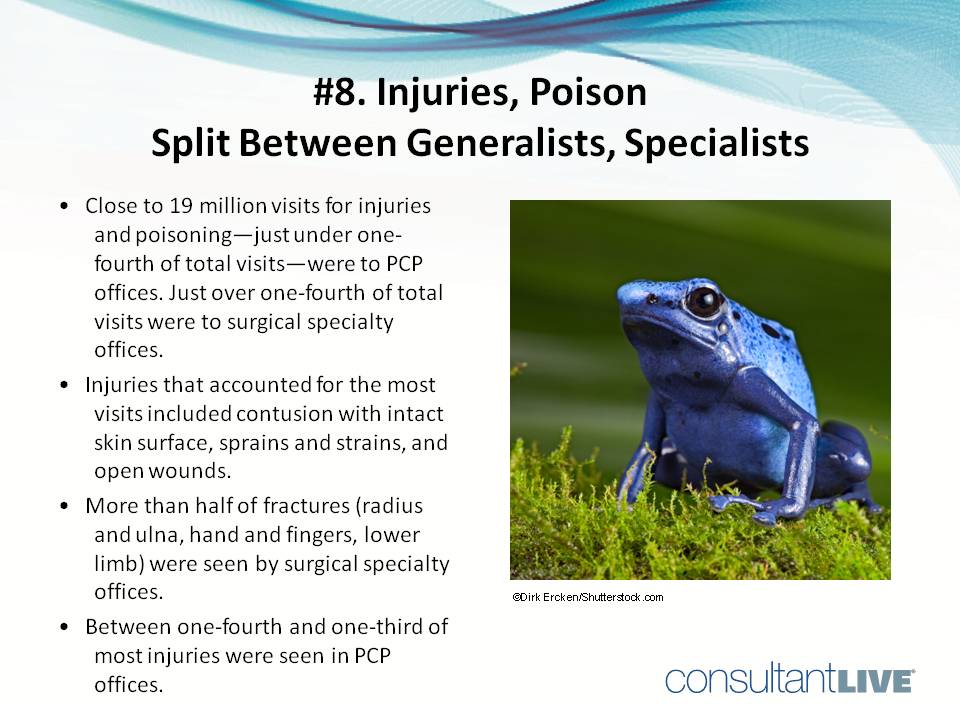
Close to 19 million visits for injuries and poisoning-just under one-fourth of total visits-were to PCP offices. Just over one-fourth of total visits were to surgical specialty offices. Injuries that accounted for the most visits included contusion with intact skin surface, sprains and strains, and open wounds. More than half of fractures (radius and ulna, hand and fingers, lower limb) were seen by surgical specialty offices. Between one-fourth and one-third of most injuries were seen in PCP offices.
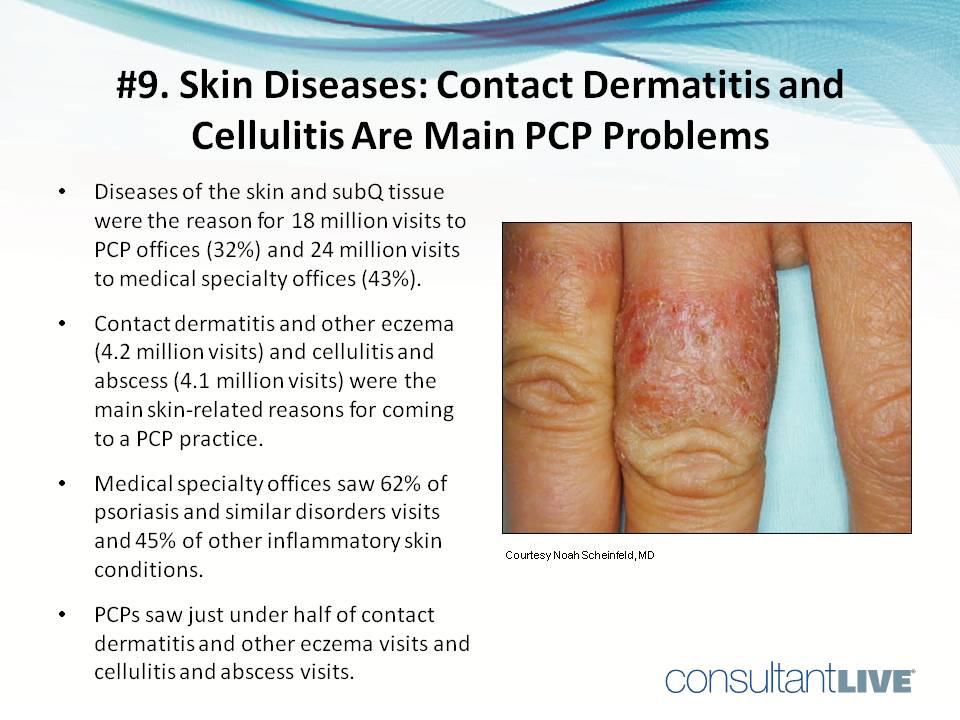
Diseases of the skin and subcutaneous tissue were the reason for 18 million visits to PCP offices (32%) and 24 million to medical specialty offices (43%). Contact dermatitis and other eczema (4.2 million visits) and cellulitis and abscess (4.1 million visits) were the main skin-related reasons for coming to a PCP practice. Medical specialty offices saw 62% of psoriasis and similar disorders visits and 45% of other inflammatory conditions of the skin. PCPs saw just under half of contact dermatitis and other eczema visits and cellulitis and abscess visits.
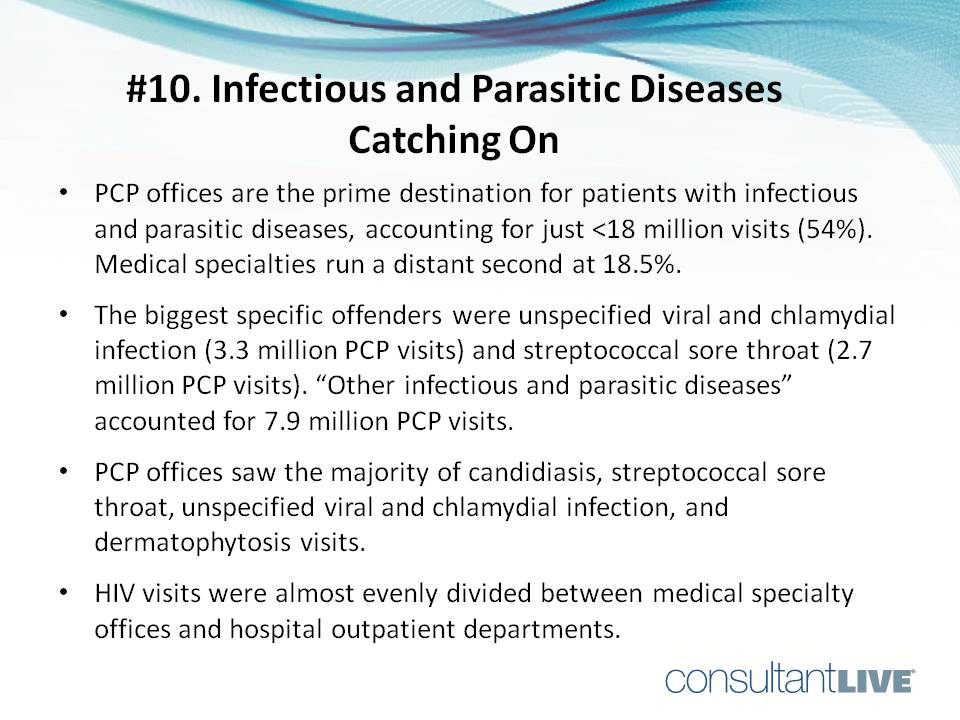
PCP offices are the prime destination for patients with infectious and parasitic diseases visits, accounting for just under 18 million visits (54%). Medical specialties run a distant second at 18.5%. The biggest specific offenders were unspecified viral and chlamydial infection (3.3 million PCP visits) and streptococcal sore throat (2.7 million PCP visits). “Other infectious and parasitic diseases” accounted for 7.9 million PCP visits. PCP offices saw the majority of candidiasis, streptococcal sore throat, unspecified viral and chlamydial infection, and dermatophytosis visits. HIV visits were almost evenly divided between medical specialty offices and hospital outpatient departments.
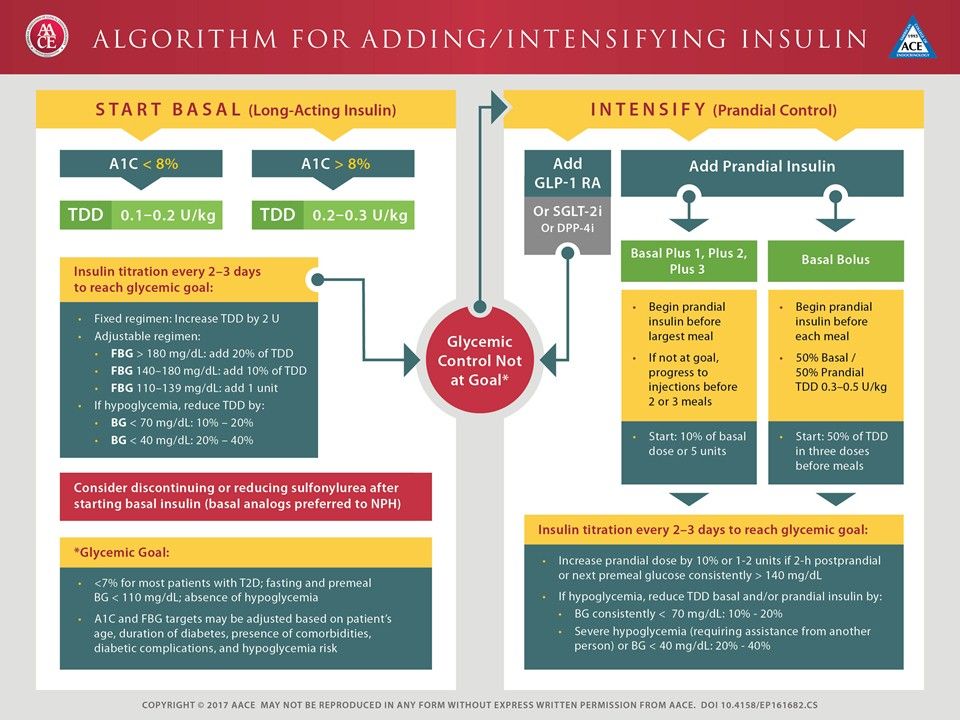
Falling just short of the top 10 diagnosis groups for PCP visits list, digestive diseases accounted for 17 million visits and neoplasms for 5 million visits. Less clear-cut diagnostic groups-“symptoms, signs, and ill-defined conditions” (eg, abdominal pain, chest pain, cough) and “supplementary classification of factors” (eg, routine infant or child check, normal pregnancy)-accounted for 317 million visits. In the weeks that follow, we will present slideshows providing more specifics on each of the diagnosis groups that account for the majority of primary care patient visits.
Why do patients visit primary care offices? For which conditions are they more likely to visit a surgical or medical specialty office-or a hospital outpatient or emergency department?The CDC’s FastStats on Ambulatory Care Use and Physician Office Visits provides lots of answers in “Selected patient and provider characteristics for ambulatory care visits to physician offices and hospital outpatient and emergency departments: United States, 2009-2010.”The slides that follow offer a closer look at the primary problems that bring patients to your office.
Related Content:




